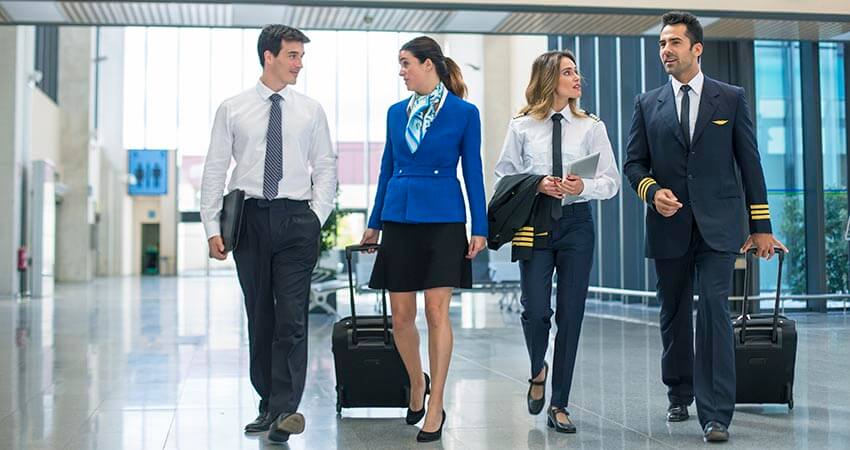Are you communicating properly with your cabin crew?
When it comes to cockpit-to-cabin communication (and vice versa) it’s important to be open and transparent, but sometimes that’s not always how it happens. To hit on these points, we have compiled a list of 3 things to start integrating into your preflight and inflight routines. Whether during takeoff and landing, turbulence, or an emergency situation, the entire crew will appreciate and benefit from applying effective communication techniques as a standard procedure.
1. Prepare cabin crew for predicted turbulence before flight. Oftentimes, it is difficult to prepare flight attendants for turbulence inflight with enough time for them to prepare the cabin. But, with a quick briefing prior to takeoff covering any forecast turbulence areas and times, they are more prepared and can plan for these instances. We understand turbulence can happen unexpectedly and it can be difficult to find time to meet with the myriad agenda items to complete before the aircraft leaves the runway, but it’s important to quickly get together with the cabin crew and highlight items, like turbulence and forecast weather conditions, so everyone is on the same page. The more the cabin crew is informed, the more ready they will address passenger concerns and safety, along with taking measures to ensure their own safety. If cabin crewmembers or passengers and baggage are not properly seated or stowed when turbulence hits, then the entire cabin runs a great risk for injury. Ensuring proper notification time and attempting to meet before flight and laying out potential high risks spots for turbulence will allow cabin crew to plan and prepare for these inflight annoyances.
2. Give cabin crew enough time before takeoff or landing to secure the cabin. As previously stated with turbulence, if the cabin is not properly secured, especially for takeoff or landing, then crewmembers and passengers run a great risk for injury. Proper calls or intercom communications to prepare the cabin for either landing or takeoff will ensure crewmembers, passengers, and luggage are properly put away during these critical phases of flight.
3. Warn cabin crew before sterile cockpit procedures are in effect. This is something many pilots don’t think about, but cabin crew or flight attendants would have no way of telling if the aircraft is at 10,000 feet unless they are warned prior or monitor the aircraft themselves (which, let’s be honest, they don’t have time for that). Just adding something as simple as a briefing prior to flight about sterile cockpit and a quick call to warn of the sterile cockpit procedures beforehand will keep cabin crew aware of what is going on in the cockpit, and how they should proceed with matters during this time.

Cabin crew, it’s on you too.
What good cockpit-to-cabin communications boils down to is transparency. The more clear, direct, and upfront you can be about procedures, the more direction cabin crew will have inflight. But it’s not only on pilots to ensure directives are clear; the cabin crew must also keep the cockpit informed and ensure they understand proper procedures during certain inflight scenarios like sterile cockpit, takeoff, and landing.
If there is an emergency situation in the cabin (i.e. fire, medical emergency, etc.), let the cockpit know and briefly explain to them your action plan. If this plan involves landing sooner rather than later, let them know as soon as possible so they can scope out the best plan of action for the circumstances. If at any time you feel a piece of information is important to share with the cockpit for the safety of the flight, do it before it’s too late and a situation becomes out-of-hand.
The same open communication should be sought during briefings and other communications between all crewmembers. If you aren’t clear on what to do and when do to it, ask for clarification. Whether or not you feel silly, you must understand how to handle certain situations. Without a bit of vulnerability, then you risk injury to yourself, other crewmembers, passengers, and the flight at large.
Communication can be tricky and making sure you’re being direct can save misunderstanding and potential injury to yourself and others. By following these tips, you can reduce and hopefully eliminate the possibility of misinformation and miscommunication.
RELATED READING
RELATED CTS TRAINING









